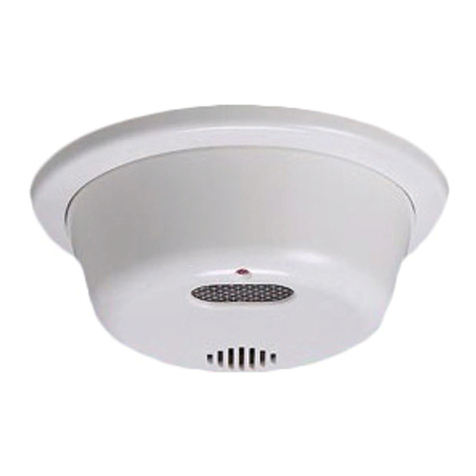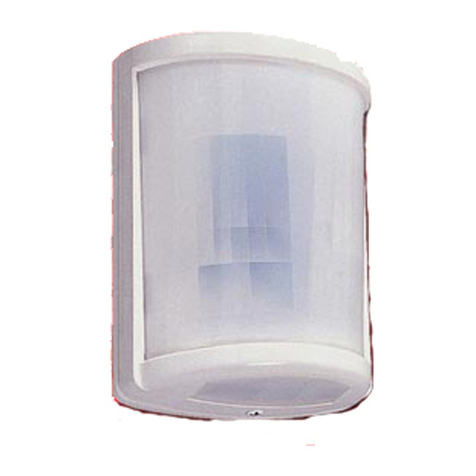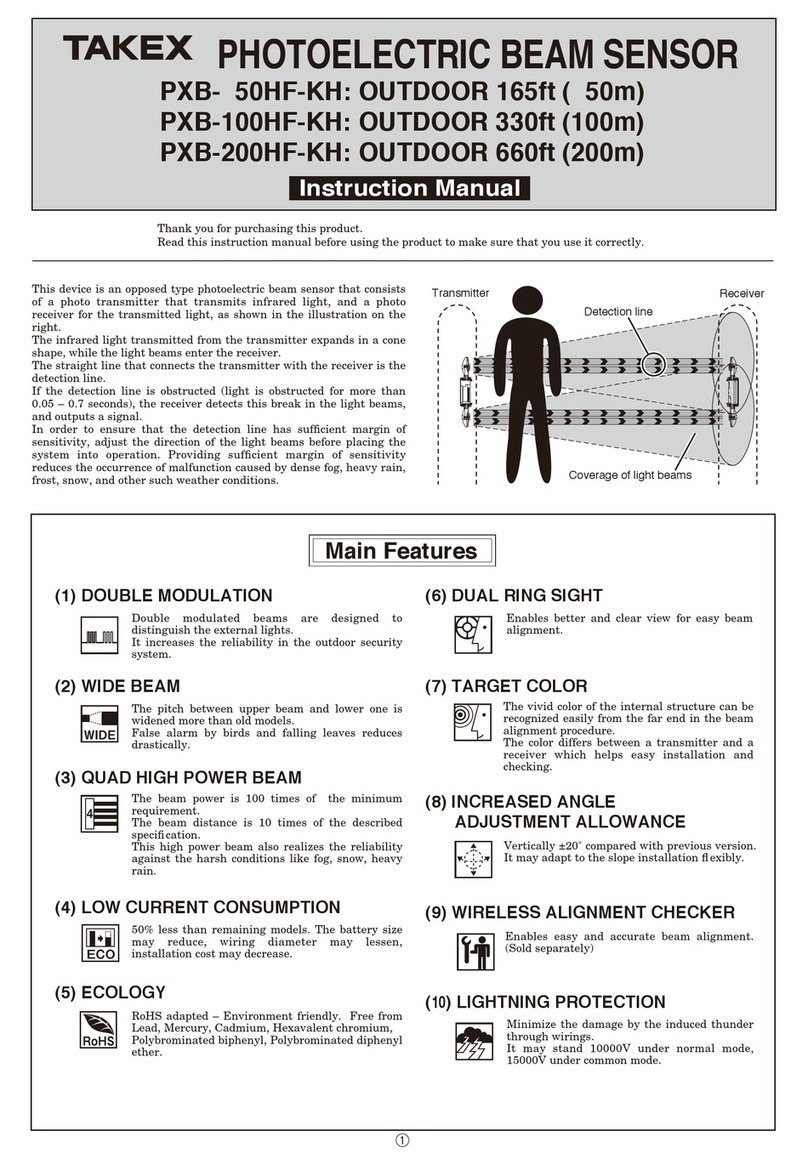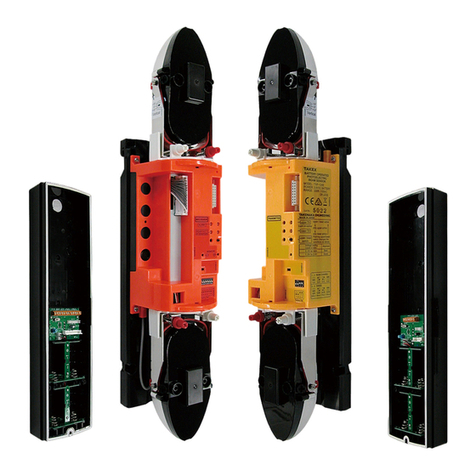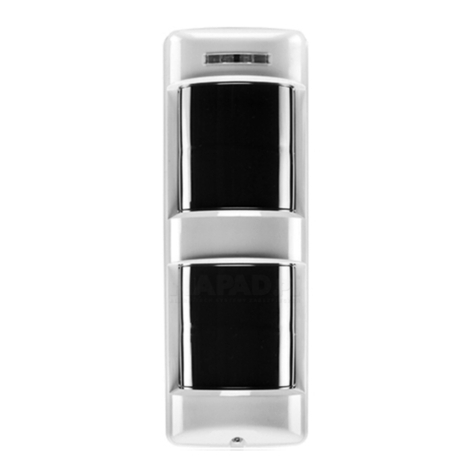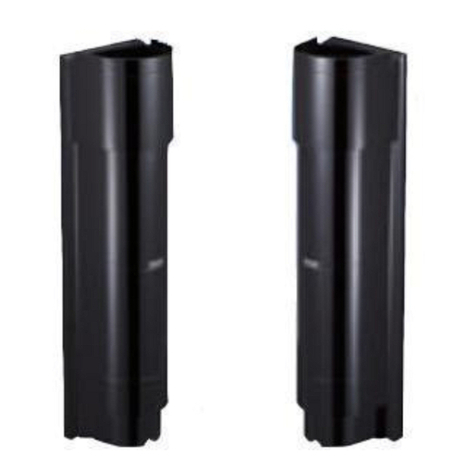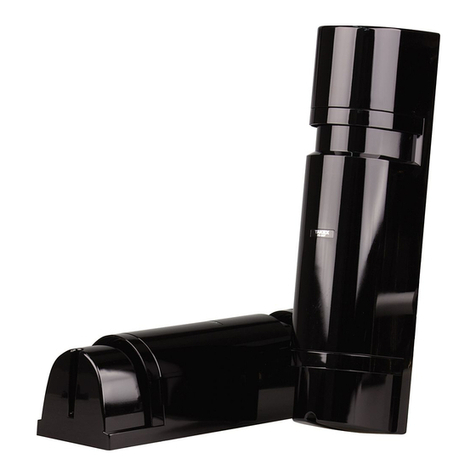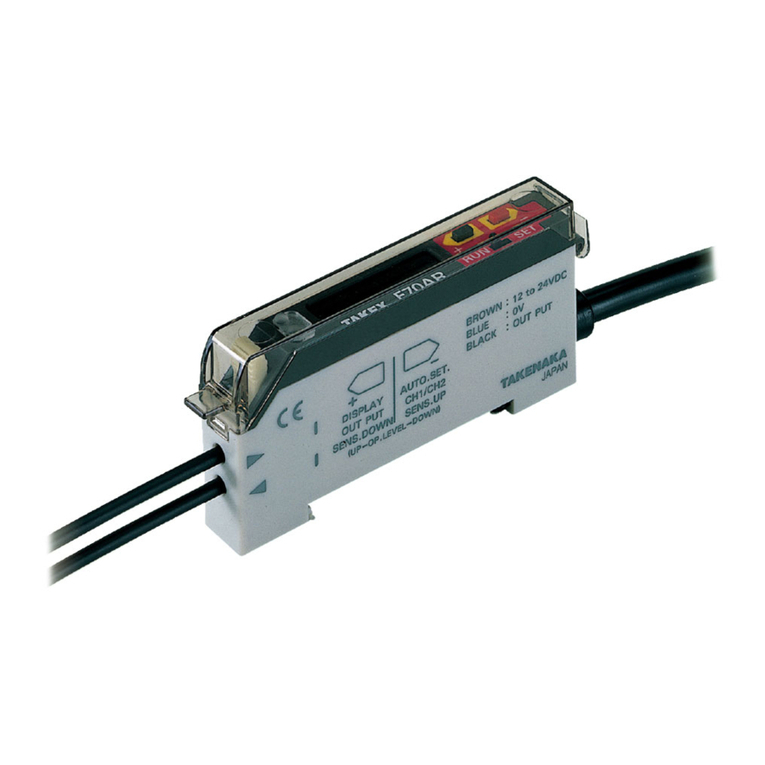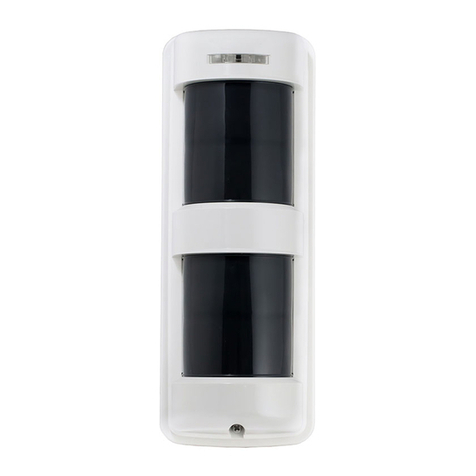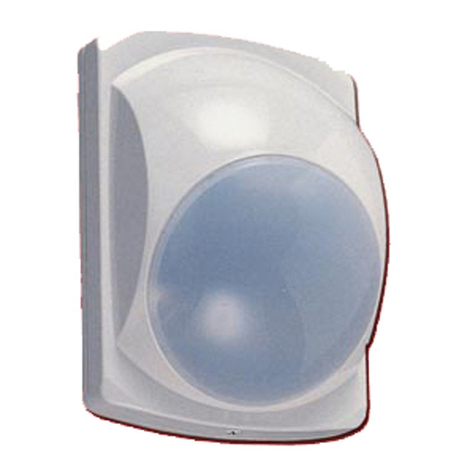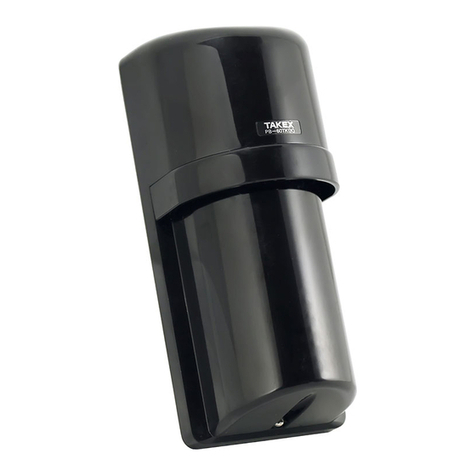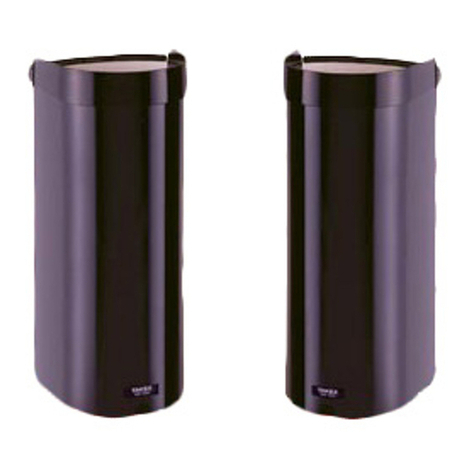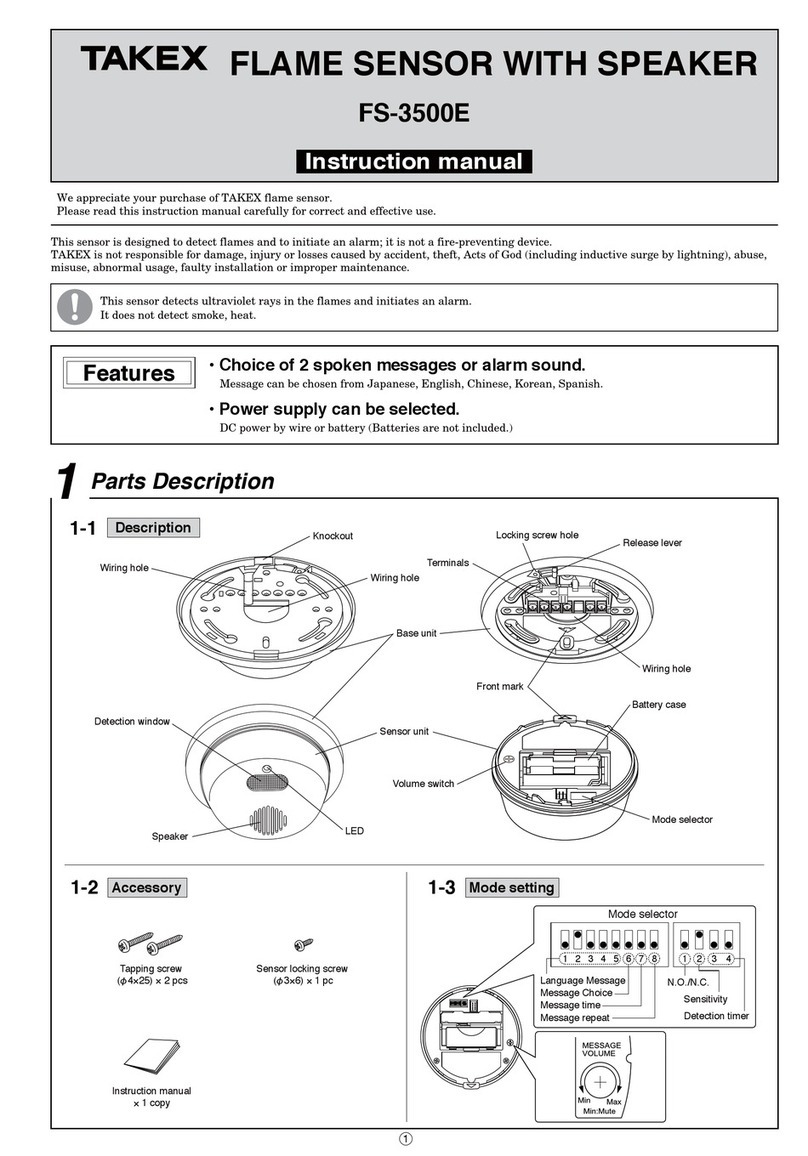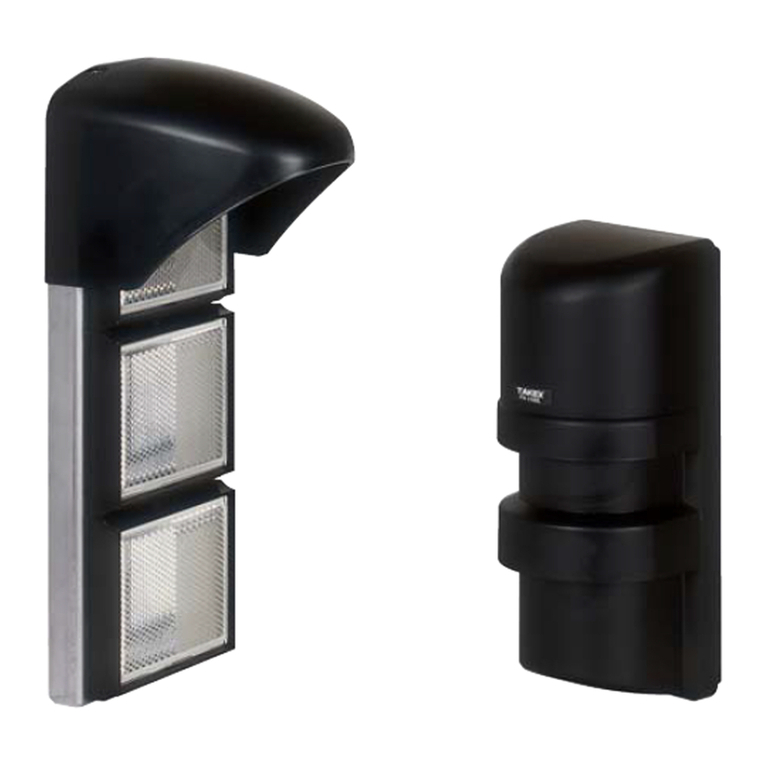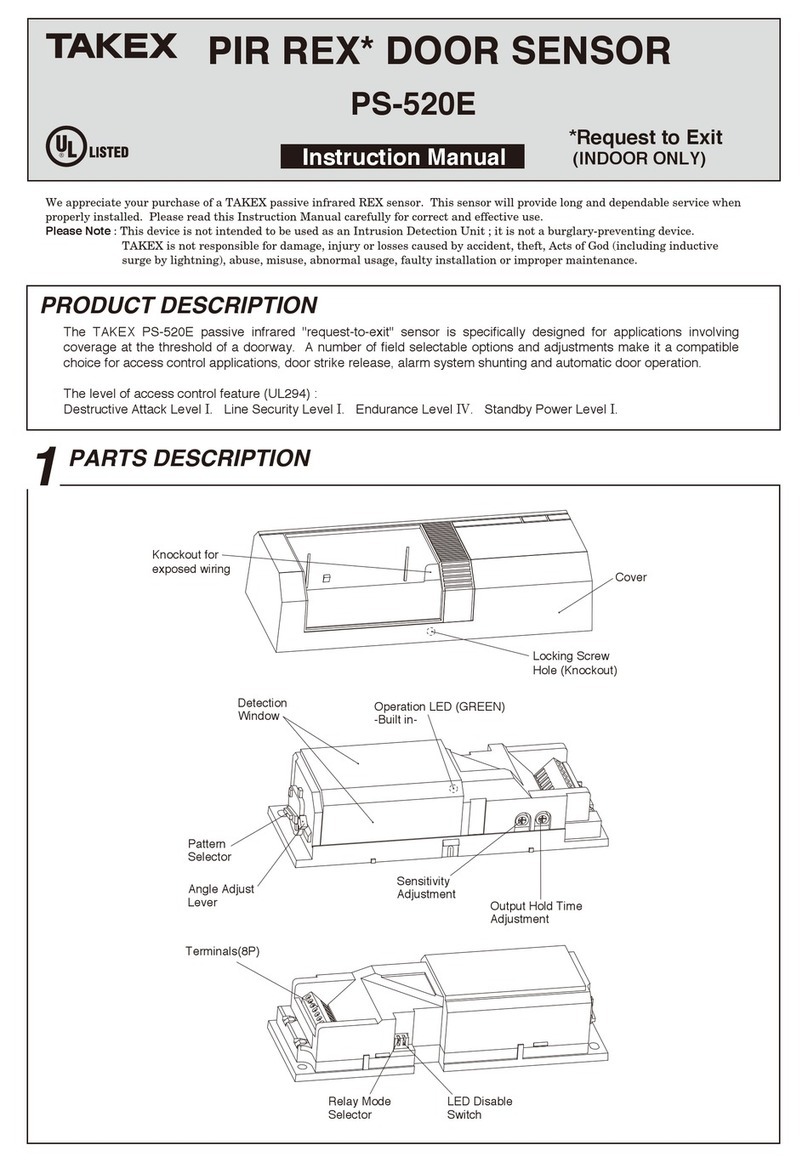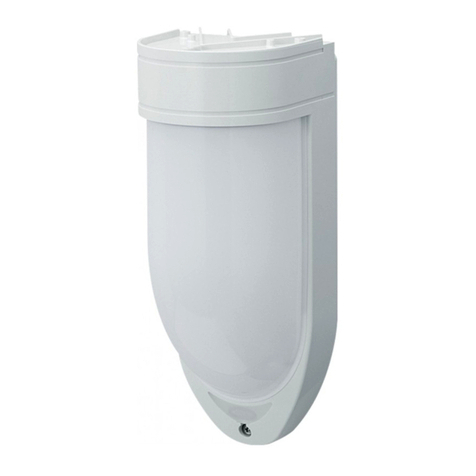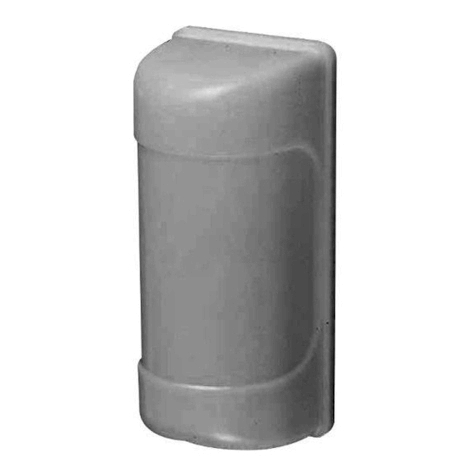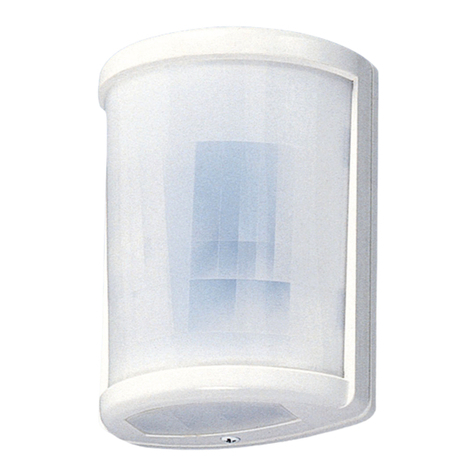
Do not use the sensors powered with a voltage level other than
the indicated power supply voltage specied (between 10 to
30V DC). Doing so may cause a re or electrical shock.
Do not connect a device that exceeds the capacity shown to the
output contact of this device. Doing so may cause a re or
electrical shock.
Do not touch the terminal section with wet hands.
Doing so may cause an electrical shock.
Do not disassemble or modify this device. Doing so may cause
a re, electrical shock, or malfunction of the device.
If smoke or an abnormal odor or sound is found, leaving it
unattended may cause a re or electrical shock. Immediately
turn off the power to the device and conrm that the
abnormal state has been corrected, and then ask the place of
purchase for repair.
EXAMPLE OF INCORRECT INSTALLATION
2-1 DON'TS Do not install as shown below. This will cause
erroneous detection or detection failure.
Installation in locations
shaded by trees etc.
Installation on uneven
ground
Slanted installation Overhead wiring Horizontal installation Installation close to a wall
Installation in locations where the
unit may be splashed by dirty
water or direct sea spray
Installation directly above
a wall
Installation in an
unstable, wobbling location
Installation in location where
strong light such as sunlight or
light from vehicle headlights can
directly enter the receiver
Installation in areas where
objects that move with the
wind (the laundry etc) can
obstruct the optical axis
Using PXB-100ATC
together with other models
(Except PBX-100HF)
2OPERATING PRECAUTIONS This manual describes the precautions to be observed for safe operation of this
device by classifying them into the following categories. As these are important, be
sure to read and strictly observe them.
Warning
Caution
Description of the Display
Indicates information that if ignored and the device is handled incorrectly, may result in death or serious injury.
Indicates information that if ignored and the device is handled incorrectly, may result in injury or damage to property alone.
This symbol indicates a prohibited action, with the specic action shown near the symbol.
Indicates the useful information.
Example: Do not disassemble
Warning
Caution
(1) When using multi-level protection, use sensors of the same model for both upper and lower sensors, and set the
same transmission power (H/L) for all of them.
(2) Using these sensors together with sensors from a different series (e.g. PB-IN-HF) may cause interference between
the sensors.
Do not install this device in a location that cannot support its
weight. Doing so may cause the device to fall and cause an
injury or malfunction of the device.
1. In areas where there are trees or weeds, the infrared may get obstructed by overgrown branches or leaves.
As this may cause erroneous detection, be sure to trim down leaves and branches according to the growth of the plants.
Furthermore, the infrared may get obstructed by swaying branches or leaves due to wind. Keep in mind the swaying of leaves and
branches when trimming them.
2. Vine type plants may wrap around the photoelectric beam sensors causing erroneous detections. Therefore, be sure to prune such plants
regularly.
3. Other natural phenomena such as insects or bird droppings may soil the sensors causing miss detection. Be sure to clean the sensors
regularly.
Cautions when using the outdoor photoelectric beam sensor (Daily maintenance)
4
